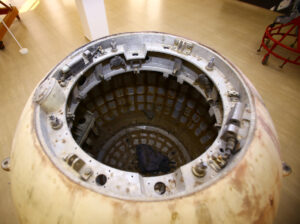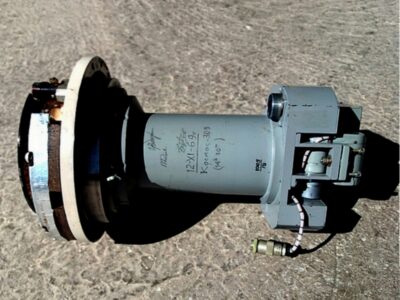 Feel the breath of the early years of the space era by touching the instruments that have been in outer space, and by looking at the unique documents of cosmonauts, space technology designers, and leading scientists.
Feel the breath of the early years of the space era by touching the instruments that have been in outer space, and by looking at the unique documents of cosmonauts, space technology designers, and leading scientists.
The Space Museum was ceremoniously opened on June 27, 2001 in Garni, on the territory of the Institute of Space Astronomy. In the Garni center, under the leadership of Grigor Gurzadyan, the ORION space observatories were created, where about 40 cosmonauts underwent their pre-flight training. This activity, however, under the conditions of secrecy of the Soviet era, remained largely unknown to the general public.
The museum exposition includes unique exhibits from the early era of space exploration created in Armenia. Here you can see the original space capsule (1962), returned from outer space, with the skin burnt upon entering the Earth’s atmosphere, and some other exhibits that have been in space.
[envira-gallery id=”9577″]
Among the exhibits is a duplicate of the ORION-1 space observatory installed on the first space station SALUT-1 (1971). Cosmonaut Viktor Patsayev, who conducted observations with the help of ORION-1, is considered “the first astronomer in the world to work outside the Earth’s atmosphere.”
A duplicate of the ORION-2 space observatory, launched on the SOYUZ-13 spacecraft (1973), is on display. Its parameters surpassed similar devices of its time; the scientific results were published in Nature and other world journals. The copy presented in the museum was exhibited at EXPO-2000 in Hannover. The museum displays some historical documents of space flights, handwritten materials of cosmonauts, scientists, designers of the VOSTOK and SOYUZ spacecraft, astronauts and designers of American spacecraft. Among the significant documents is the manuscript of an article by Nobel laureate Hans Bethe, one of the key figures in the creation of the first nuclear bombs; the article was co-authored with Grigor Gurzadyan.
[envira-gallery slug=”gk01″]
1111111
CONTACTS
Museum Board: Professor V. Gurzadyan, A. Kashin, A. Zakharyan, K. Bayramyan
Engineering Town, Nor Nork Massif, (25 Bagrevand St.)
Yerevan, Armenia
Tel.: +37410 343965
Organization of visits for tourist groups and
educational institutions: +37499 086088
E-mail: cosmology@yerphi.am
[smartslider3 slider=”4″]
Pt 800 x 600 1066.7px x 800.0px 
Pt 400 x 300 1533.3px x 400.0px
Pt 200 x 150 266.7px x 200.0px
Pt 150 x 113 200.0px x 150.7px
Pt 100 x 75 133.3px x 100.0px
Pt 500 x 375 666.7px x 500.0px
Pt 520 x 390 666.7px x 500.0px
666px x 500px








Last Updated on 2025.05.06








